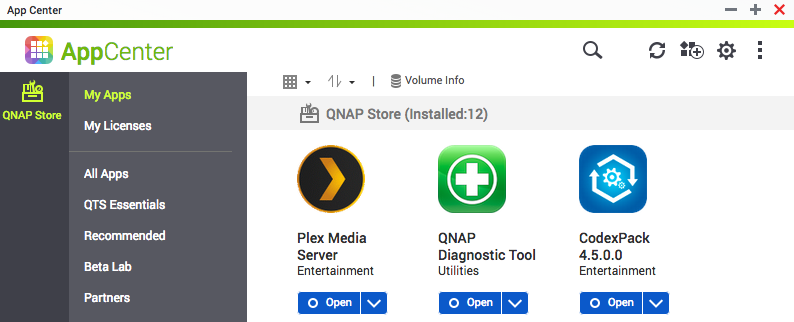This is part of the story of how I went from chipping away at archiving my movie collection one DVD at at time to running a bare-metal Kubernetes cluster capable of transcoding dozens a day.
Putting together your own Netflix at home takes a bit of cobbling together. Here are all the pieces:
Storage Space
A compressed standard definition video takes up about 2GB of space, and a high definition video anywhere from 5-15GB. With almost 200 videos in my collection, I was going to need over a terabyte of disk space. My NAS, or network attached storage, a fancy term for a computer dedicated as a file server, has a 4TB Raid 1 array which is 2 4TB hard drives where one of them is a mirror of the other.
So I already had enough space to spare, though not enough to store the originals. Uncompressed video sizes range from 10-30GB per video, which was way more than I cared to redundantly backup on my NAS. Drives may be relatively cheap these days, but I’m still a cheap bastard at heart, and plan to treat the original disks as my archive or backup. Hopefully I won’t regret that down the line!
Narrator: She did.
Video Server
My NAS is a QNAP TS251+ and one of the built-in apps is Plex Media Server. So it only took a minute to install and configure it to look for videos in a directory on the NAS.

Side Note: The QNAP has a web UI for installing a limited set of apps, which at first was disappointing but if you are whale-inclined (as I am), you can install the Container Station app, otherwise known as Docker, and then you can run whatever you like. Long term I’ll probably run Plex through Docker so that I can indulge my inner control freak.
Video Client
I have been a proud owner of a Tivo for years with one remote to rule them all. So of course my heart was immediately set on watching my videos with my trusty Tivo. Years ago I started out with a Roamio, but quickly upgraded to a Bolt for 4K support, because I wanted all the K’s. It turns out that the client drives most of your decisions down the road, so choose wisely. Overall the biggest concerns are:
Does it have a hard-wired ethernet connection?
This will impact your streaming quality and overall experience. Luckily, I just ran CAT6 throughout my house last Christmas. 🎄 Go me!
Does it support Direct Play and Direct Stream?
Since I am serving videos from my NAS, I didn’t want it transcoding the videos on the fly, interfering with its other responsibilities. Direct Play/Steam mean that the video or audio track data is sent directly to the client, without any additional transcoding to match the capabilities of the client. Now since I have only one TV, and wasn’t streaming to something underpowered like a smartphone, I could transcode my videos in a Tivo-friendly format up-front, and then play them directly on my Tivo.
The result is no buffering, better quality, and world peace.
Transcoded Videos
I used MakeMKV to save the disc to a file, and then HandBrake to perform the transcoding.
Depending on how you go about transcoding a video, it could take anywhere from 30 minutes to 12 hours(!). It requires a lot of raw computing power, is boring to do, requires a ton of time to redo if you mess it up, and is ripe for parallelization. Translation: This is the perfect job for a computer, even better a cluster of computers.
We got cows
I picked a video clip that I was okay watching repeatedly while testing…

I then proceeded to watch that happy little cow dance with a tornado for a few hours while tweaking the transcoding settings until my cownado looked just right.
Two days tinkering yielded a very pretty, near-Netflix experience on my TV.
 I have the best taste in movies
I have the best taste in movies
Wow that was easy! I bet I can do the rest in just a few more weekends, right? Erm… yeah that’s not how it went. The remainder of my journey revolves around how I got the “horse power” to tackle transcoding over 200 videos.
Next: Docker or GTFO